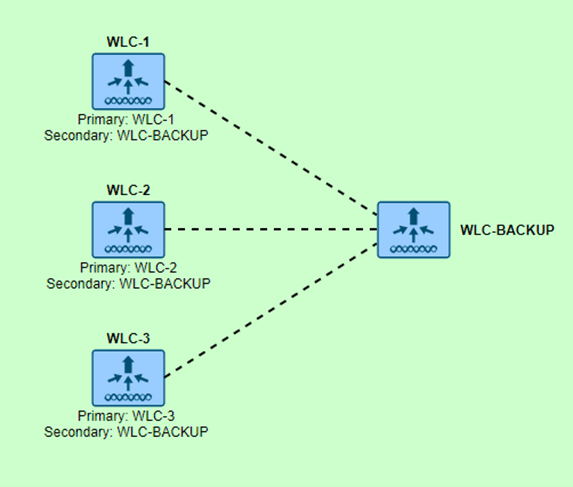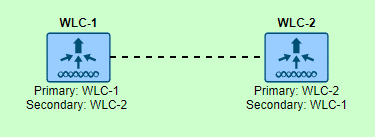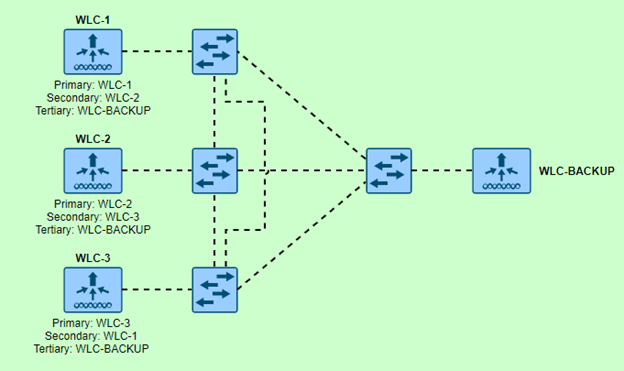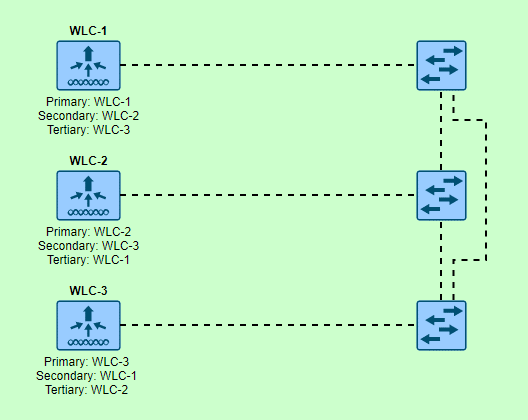Various Redundancy Models for Wireless LAN Controller
In this blog post, you will learn various deployment modes of the Cisco Wireless LAN Controller (WLC) and it explains the nuances of each model and requires beginner to intermediate level of skill related to Wireless Technology.
After reading this blog you will be able to distinguish between the different WLC deployment models and will be able to understand which model will suit your project. This blog explains the models in a simple to understand manner while maintaining technical accuracy which helps you save time as you will be empowered with the knowledge of the model that matches your requirement.
Cisco Wireless Lan Controller
Cisco WLC is a single solution to control, manage and configure the enterprise wireless network. In today’s network, Cisco WLC is very popular because companies want centralized wireless controller design. Companies don’t want to use any individual Access Points. With the help of WLC, you get enhanced functionality and redundancy.
You can get 3 levels of WLC redundancy in the network. By deploying Primary WLC, Secondary WLC, and Tertiary WLC.
Multiple Redundancy Models To Deploy Cisco WLC In High Availability.
N+1: – In N+1, N can be any number of wireless LAN controllers, but your backup will be only one device. WLC should have required licenses, if backup WLC will not have enough licenses then the lowest priority AP will be kicked out from backup WLC in case of primary WLC failure.
Note: – If you are deploying an N+1 model between 2 WLC then one WLC will be primary and the other will become backup.
N+N: – In the N+N model, multiple WLC can be backup of each other. Enough licenses should be available on all the WLC’s for uniform distribution of APs across all the WLC.
Note: – If you are deploying only two WLC at two different locations with reachability through MPLS. Then N+N model should be used. In this model, you can use both the WLC as primary WLC at respective sites.
N+N+1: – In the N+N+1 model, you can deploy a tertiary backup WLC. In case of primary WLC failover, AP’s can join secondary backup WLC. In case of multiple WLC failover, APS can join tertiary backup WLC. In the N+N+1 deployment model, tertiary backup WLC can only be one in the network. Tertiary backup WLC should have sufficient licenses, otherwise, in case of multiple WLC failover, APS with the highest failover priority will get priority and lowest failover priority APs will not be able to join tertiary WLC.
N+N+N (Resiliency): – In the N+N+N model, all the APs have their primary, secondary, and tertiary WLC. In such a case, one will get complete resiliency. Enough licenses should be available on all the WLC’s for uniform distribution of APs across all the WLC. APS will join respective WLC based on license capacity.
Note: – Wireless Lan Controller works in Active-Standby with respect to every Access Point. For every Access Point, only one WLC can be active.
Conclusion: – Now we have a good understanding of the different types of modes for the Cisco WLC and which best suits your project. After reading this blog you will be able to understand why different modes of deployment have been created, each with its uses and advantages.
If you require a deeper knowledge of this topic, please free to refer to the Configuration Guide by Cisco and if you feel there is any input or suggestions that would complement this blog, we would be more than happy to receive your comments.
If you are looking for consulting, advisory, and professional services to create a wireless environment for your organization then Zindagi Technologies can help.
Zindagi Technologies Pvt. Ltd. is an IT consultancy and professional services organization. We have expertise in planning, designing, and deployment of Network and Security technologies, large-scale data centers, Private/Public/Hybrid cloud solutions. For more details, we are available for you, give us a call on +919773973971 or reach us at Zindagi Technologies.
Author
Chakransh Awasthi
Senior Consultant-Network Security
